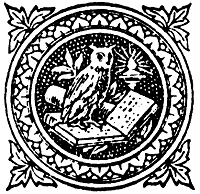Marginalia
Home
About Marginalia
Current Issue
Archived Issues
Notes to Contributors
Links to Other Online Journals
Marginalia -- The Website of the MRG
trans. by Simon Armitage
114 pages, London: faber and faber, 2007
Hardback �12.99; Paperback �7.99
ISBN: 0571223273/978-0571223275
The northern lexical set that Armitage employs is a resonant vehicle for the Gawain narrative. It is especially effective in the hunt passages. Occasionally, a colloquialism jars slightly for this reader; Gawain's alliterative exclamation in response to Bertilak's praise in the exchange of offerings is oddly comic: '"Oh fiddlesticks to the fee" said the other fellow' (1940).
Gawain's alliterative form is frequently rejected by modern translators. To Armitage, however, it is the 'warp and weft of the poem' and alliteration indeed characterises his version. He employs the form, with its characteristic stress patterns as well as linked letters, to good effect so that the poem is infused with a kind of 'otherness' that perfectly suits the Arthurian and supernatural setting.
I know that, proverbially, one shouldn't judge a book by its cover, but this truly is an edition to treasure. It is published by Faber and Faber in a slim hardback, with a pale grey dustcover. The front illustration is an illustration in the grey colour scheme of Gawain on Gringolet. Only his cloak and shield are picked out in red, with the pentangle subtly clear in the centre. Despite my occasional reservation about the use of idiom, I'd recommend this both to medievalists and to those people with no knowledge of Middle English that Armitage seeks to reach.
Linda Bates, University of Cambridge
 Contents |  Next |
�2004 The authors and the Medieval Reading Group at the University of Cambridge
No material may be reproduced without written authority.
Last modified on .
Marginalia -- MRG Website::Contact Us::About Us::Credits and Thanks::Search::Archives

